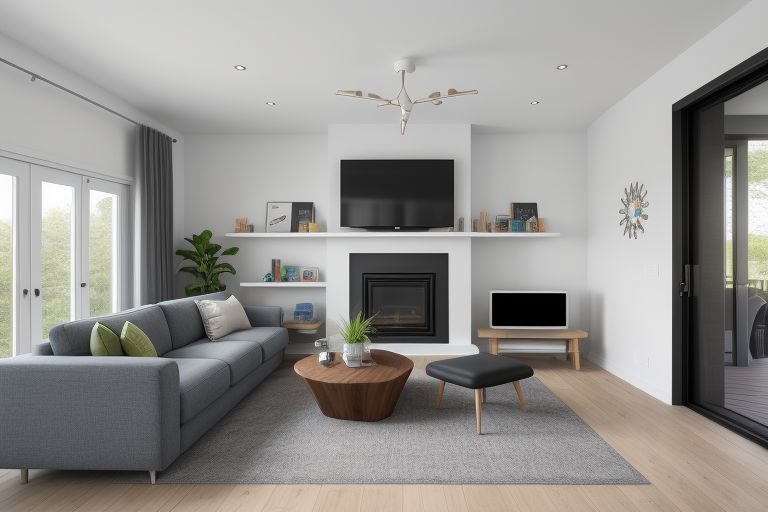
Developing the Next Generation of Smart Home Audio Systems
In the ever-evolving world of technology, smart home audio systems have become a centerpiece in the integration of convenience and entertainment. As we push further into the 21st century, the boundaries of what these devices can achieve are continually expanding, leading to groundbreaking developments in how we interact with and enjoy our home environments. This comprehensive exploration delves into the emerging trends, technologies, and challenges shaping the next generation of smart home audio systems.
Understanding Smart Home Audio Systems
Smart home audio systems refer to a network of devices that use internet connectivity to provide an immersive audio experience. These systems can be controlled remotely through smartphone apps or voice commands, allowing users to manage their audio content from anywhere in their home. Common elements include multi-room audio setups, voice-controlled speakers, soundbars, and subwoofers, all working in harmony to deliver superior sound quality and user convenience.
The Evolution of Smart Home Audio
Historically, home audio systems were limited by physical media and manual operation. With the advent of digital media and wireless technology, audio systems began to adopt smarter, more integrated functionalities. Today, they are part of a broader ecosystem that includes other smart home devices like thermostats, lighting, and security systems, all interconnected through platforms like Google Home, Amazon Alexa, and Apple HomeKit.
Current Trends in Smart Home Audio Technology
Several key trends are currently shaping the development of smart home audio systems:
1. Voice Control and Artificial Intelligence
Voice-controlled assistants such as Amazon’s Alexa, Google Assistant, and Apple’s Siri have transformed how users interact with their audio systems. These AI-driven platforms can understand and execute voice commands, play music, provide information, and even control other smart home devices.
2. High-Resolution Audio
As streaming services like Tidal and Amazon Music introduce high-resolution audio, smart home audio systems are adapting to support better sound quality that rivals traditional hi-fi audio systems. This trend is pushing manufacturers to enhance the acoustic capabilities of their devices without compromising on design or connectivity.
3. Integration with Home Automation
Smart home audio systems are increasingly being integrated into larger home automation setups. This integration allows for scenarios where music can accompany daily routines; for instance, morning playlists that automatically start with your alarm or soothing sounds that play as you dim the lights for bedtime.
4. Sustainability and Design Innovations
With a growing emphasis on sustainability, manufacturers are exploring eco-friendly materials and energy-efficient designs. Additionally, there is a focus on creating aesthetically pleasing units that blend seamlessly into various home decors.
Challenges Facing the Next Generation of Smart Home Audio Systems
Despite these advancements, several challenges remain:
1. Privacy and Security
As devices become smarter and more interconnected, the risk of data breaches and privacy violations increases. Manufacturers must prioritize robust security measures to protect user data and ensure privacy.
2. Compatibility and Interoperability
With multiple brands and platforms in the market, ensuring compatibility across different devices and systems can be problematic. Industry standards and open-source platforms could play a crucial role in addressing these issues.
3. Cost and Accessibility
High-quality smart home audio systems are often expensive, limiting their accessibility. Finding a balance between cost, quality, and functionality is essential for wider adoption.
Future Prospects
Looking forward, the future of smart home audio systems appears promising. Innovations in AI, machine learning, and spatial audio are poised to redefine the listening experience. For instance, spatial audio technologies enable sound to be more immersive and three-dimensional, enhancing the way users experience movies and music at home.
Moreover, ongoing research into user behavior and preferences will likely yield smarter, more adaptive systems that can anticipate user needs and respond in real-time. This could lead to more personalized and engaging audio experiences that are tailored to individual listeners.
Conclusion
As technology continues to evolve, the next generation of smart home audio systems promises to bring more immersive, personalized, and seamless audio experiences into our homes. With advancements in AI, integration capabilities, and sustainability, these systems are not only enhancing our entertainment options but also transforming the very way we live. Manufacturers who prioritize user experience, compatibility, and security are likely to lead this exciting frontier.


